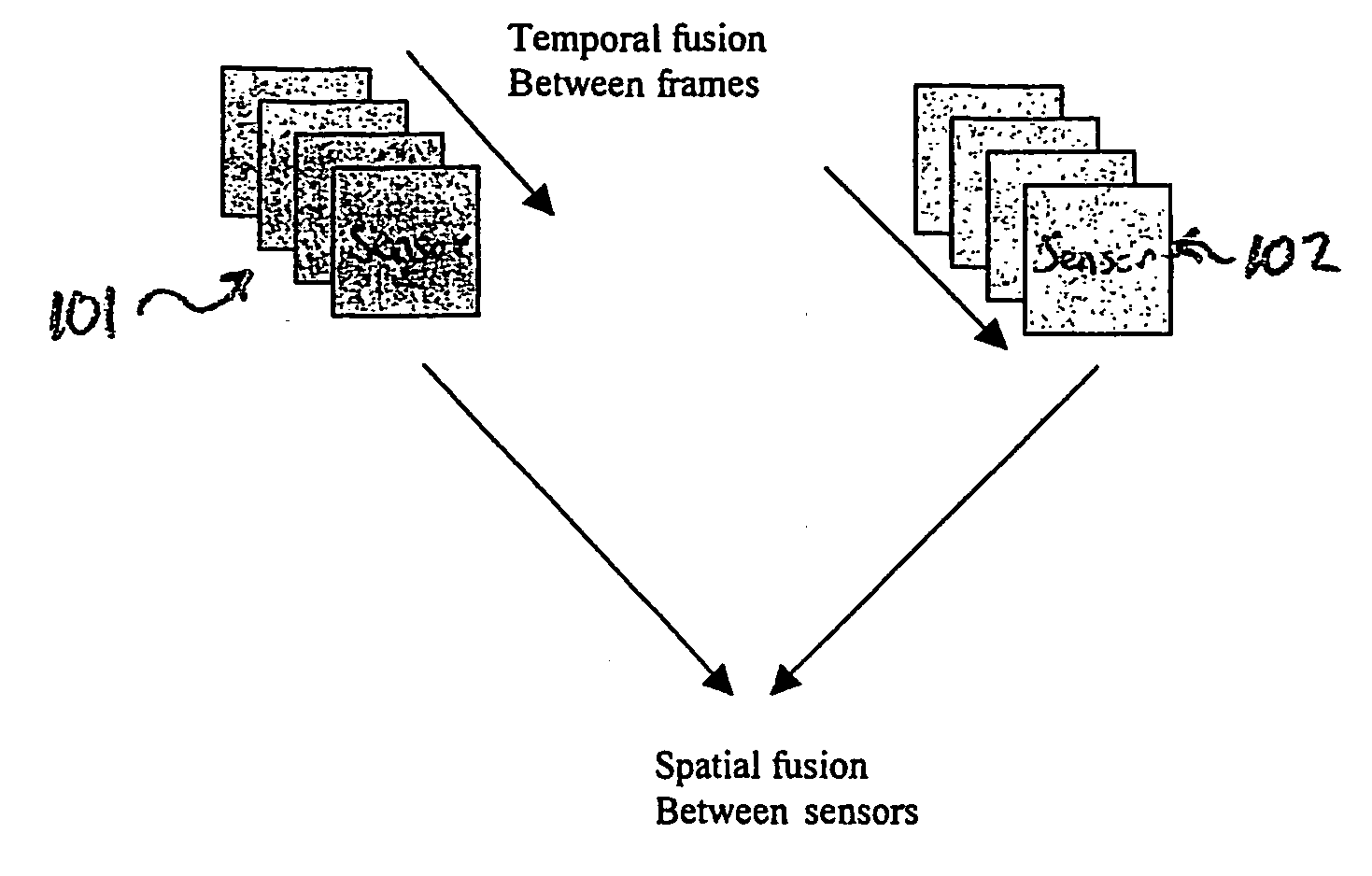Target detection improvements using temporal integrations and spatial fusion
a technology of spatial fusion and target detection, applied in the field of data fusion, can solve the problems of reducing the detection range, chopping clutter situations are often complicated to process, and traditional constant false alarm ratio (cfar) detection techniques are often failed, so as to enhance target detection and recognition, and enhance target detection. effect of recognition
- Summary
- Abstract
- Description
- Claims
- Application Information
AI Technical Summary
Benefits of technology
Problems solved by technology
Method used
Image
Examples
Embodiment Construction
[0029] There are a number of acronyms associated with the description of the present invention, and in order to facilitate an understanding of the description, a glossary of acronyms is provided below:
[0030] ATR—automatic target recognition
[0031] CFAR—constant-false-alarm-ratio
[0032] FPA—focal plane array
[0033] FPN—fixed pattern noise
[0034] IR—infrared
[0035] NUC—non-uniformity correction
[0036] Pd—probability of detection
[0037] Pdf—probability density function
[0038] Pfa—probability of false-alarm
[0039] ROC—receiver operating characteristics
[0040] RV—random variable
[0041] STD—standard deviation
[0042] SCNR—signal-to-clutter-noise-ratio
[0043] Although techniques of the present invention are aimed for improving target detection, these techniques can be used for other applications involving thresholding techniques. In target recognition, ATR (automatic target recognition) is a research area with high attention. One popular ATR approach uses the matched filtering / correlation ...
PUM
| Property | Measurement | Unit |
|---|---|---|
| time | aaaaa | aaaaa |
| threshold | aaaaa | aaaaa |
| plurality of time frames | aaaaa | aaaaa |
Abstract
Description
Claims
Application Information
 Login to View More
Login to View More - R&D
- Intellectual Property
- Life Sciences
- Materials
- Tech Scout
- Unparalleled Data Quality
- Higher Quality Content
- 60% Fewer Hallucinations
Browse by: Latest US Patents, China's latest patents, Technical Efficacy Thesaurus, Application Domain, Technology Topic, Popular Technical Reports.
© 2025 PatSnap. All rights reserved.Legal|Privacy policy|Modern Slavery Act Transparency Statement|Sitemap|About US| Contact US: help@patsnap.com



